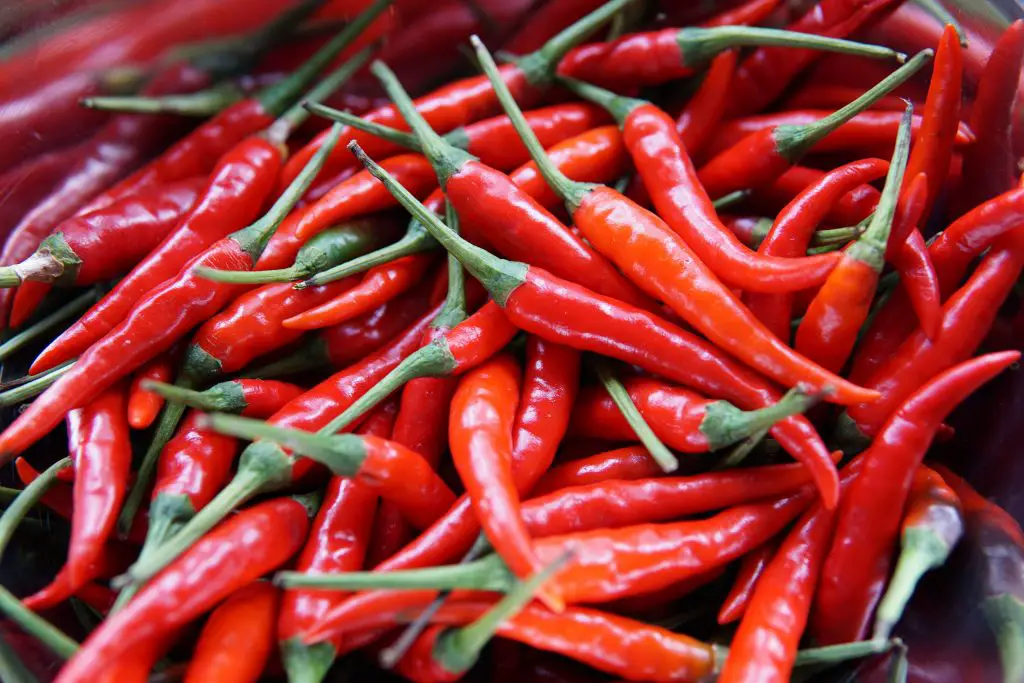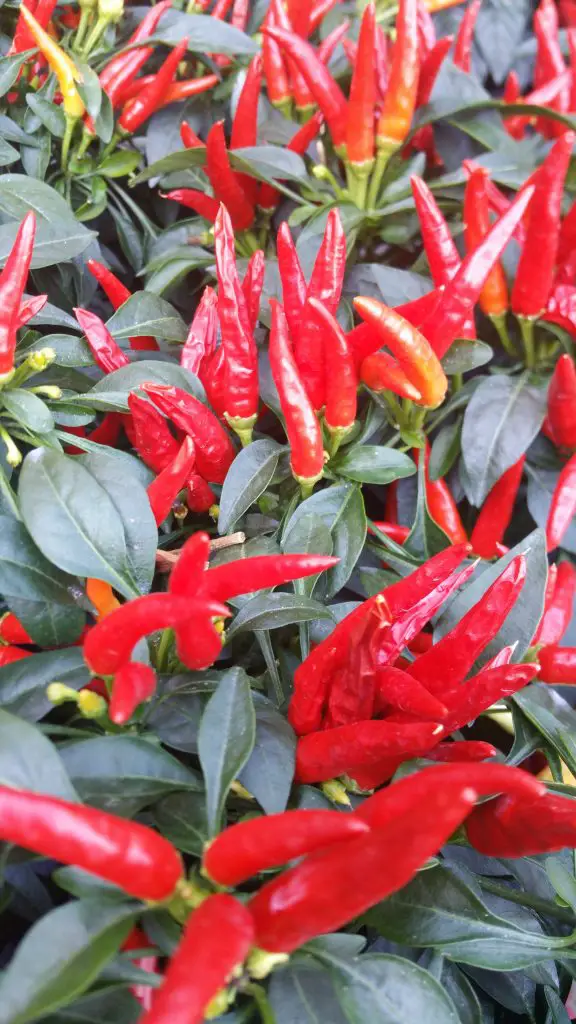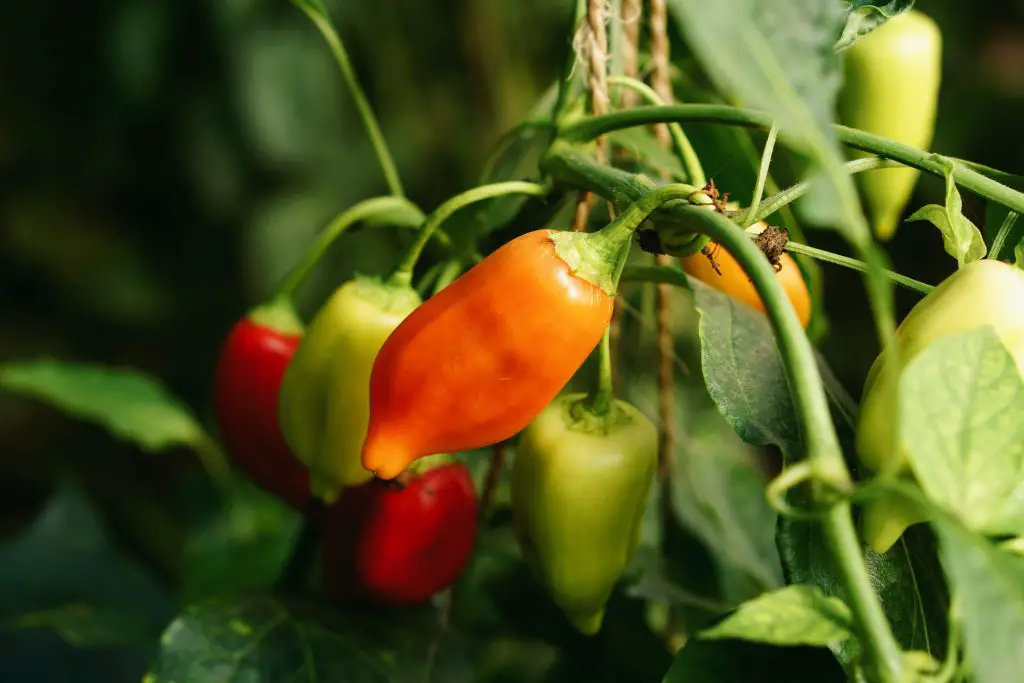Are Pepper Plants Perennial? For most gardeners that live in Zone 9 or lower Pepper plants are treated as annual plants with fresh seeds sown every year.
However, Pepper plants, whether they are Sweet, Bell, or Hot Peppers, are actually perennial plants in their native environment. Pepper plants are a member of the Solanaceae which includes Tomatoes, Potatoes, and Eggplants. They originated in South America in warm tropical frost climates and generally thrive in hot conditions.
How Long Can A Pepper Plant Live?
If you are able to maintain a suitable environment for the Pepper Plants the indications are that they can last at least 5 years. An article in the Los Angeles Times reported a 15-year-old plant that was over 10 feet tall. It was also noted that the volume of Peppers produced increased with the size of the plant. This was because there was a greater number of points on the plant where flowers could be produced.
What Temperature Kills Pepper Plants?
However, given that the Pepper plants do not survive in cooler climates the obvious question is what temperatures can they tolerate?

The minimum temperature most Pepper plant varieties can tolerate is 0°C (32°F). At soil temperatures below that point, the plants will die. The ideal temperature for growing pepper plants is between 15 to 32°C (60 to 90°F). At Temperatures below 15°C (60°F) growth slows down significantly and the onset of frost will usually cause the leaves to blacken and fall off.
At the other end of the spectrum temperatures above around 35°C to 40°C (95 to 104°F) can cause flowers to drop off the plant due to heat stress. This will not kill the plant but it will affect the size of the harvest.
How Do You Keep Pepper Plants Over Winter?
For those people that live in harsher climates and want to overwinter Peppers plants, they need to be protected. This will require the plant to be brought inside which is easy if they are being grown in a pot. In cases where the plant is being grown in the garden, they will need to be dug up. When doing this care needs to be taken to minimize the root disturbance.
Additionally, when bringing the plant inside, it is usually not sufficient to place it in a greenhouse or similar unheated space. A source of heat is required to prevent the plant from freezing.
An alternative to heating a large space is to use a heated propagator. One example of this is the heating propagator range from Vitopod, which can be adjusted for height. This is important as Pepper will increase in size with age. The other benefit of using this type of equipment is it allows the temperature to be controlled more easily and accurately, as controlling the temperature of the entire room can be difficult.

Once inside, the plants should be stored at temperatures between 5°C-12°C (41-54°F) over winter. At these temperatures, only small amounts of water will be required. To avoid the soil from becoming soggy check plants weekly and water only when the soil is getting dry.
Additionally, it is advisable to allowing plenty of airflow around your plants, as this will also help to avoid mold and disease.
The alternative to overwintering plants is to grow them year-round in an indoor Smart Garden. The Smart Garden is a self container planting unit that has its own built-in light and water system that provides the plant with everything it needs to grow year-round. Seed pods can be purchased that fit into the system that make it simple to grow your Peppers year-round with a minimum of fuss. Click here to find out more.

How To Prune Pepper Plants Before Winter
To minimize the stress on the plant when it is being transplanted it is best to prune it prior to moving it. This is best done in 2 stages as it will optimize the harvest at the end of the season.
The first prune should be done a few weeks before the first frost is due to occur. At this stage, the objective of the prune is to encourage the fruit that is present on the plant and of a reasonable size to ripen. To encourage this it is best to prune away parts of your plant that are not being used to produce the fruit.
This will include the majority of the foliage that does not have peppers attached. The removal of these stems will redirect the remaining energy from the plant towards the ripening of the remaining fruit.
Once the final harvest of the season is taken, which is typically around the time of the first frost you will need to prune the plant again in preparation for it to be transplanted for the winter. However, when considering what to prune off you should keep in mind the need to leave some leaves on the plant. This will allow the plant to survive the colder months by allowing photosynthesis to continue.
The overall goal when pruning young pepper plants at this stage it minimizes the stress on the roots during winter while positioning the plant to optimize the harvest the following season.

This is done by encouraging a greater number of sites to produce flowers and then fruits. This can be accomplished by cutting the central stem above the second or third node.
The node is the point on the stem at which new leaves and stems form causing the branches to fork at that point. Cutting above the nodes will encourage the plants to produce more branches from the node and also create more new nodes. The creation of these sites will, in turn, encourage the formation of flowers.
However, when pruning the plant be sure to remove any inward-facing stems to prevent them from crossing. This will allow more sunlight to hit the new growth and also allow the fruit that is formed to ripen.
Related Articles
What Are The Different Types Of Hot Peppers?
Why Are My Pepper Plants Not Growing Peppers?
How Many Jalapenos Do The Best Pepper Varieties Produce?
Pepper vs Black Peppercorn: What Is The Difference?
Capsicum vs Bell Pepper: Are They The Same Thing?
Are Dried Peppers Hotter Than Fresh Ones?

